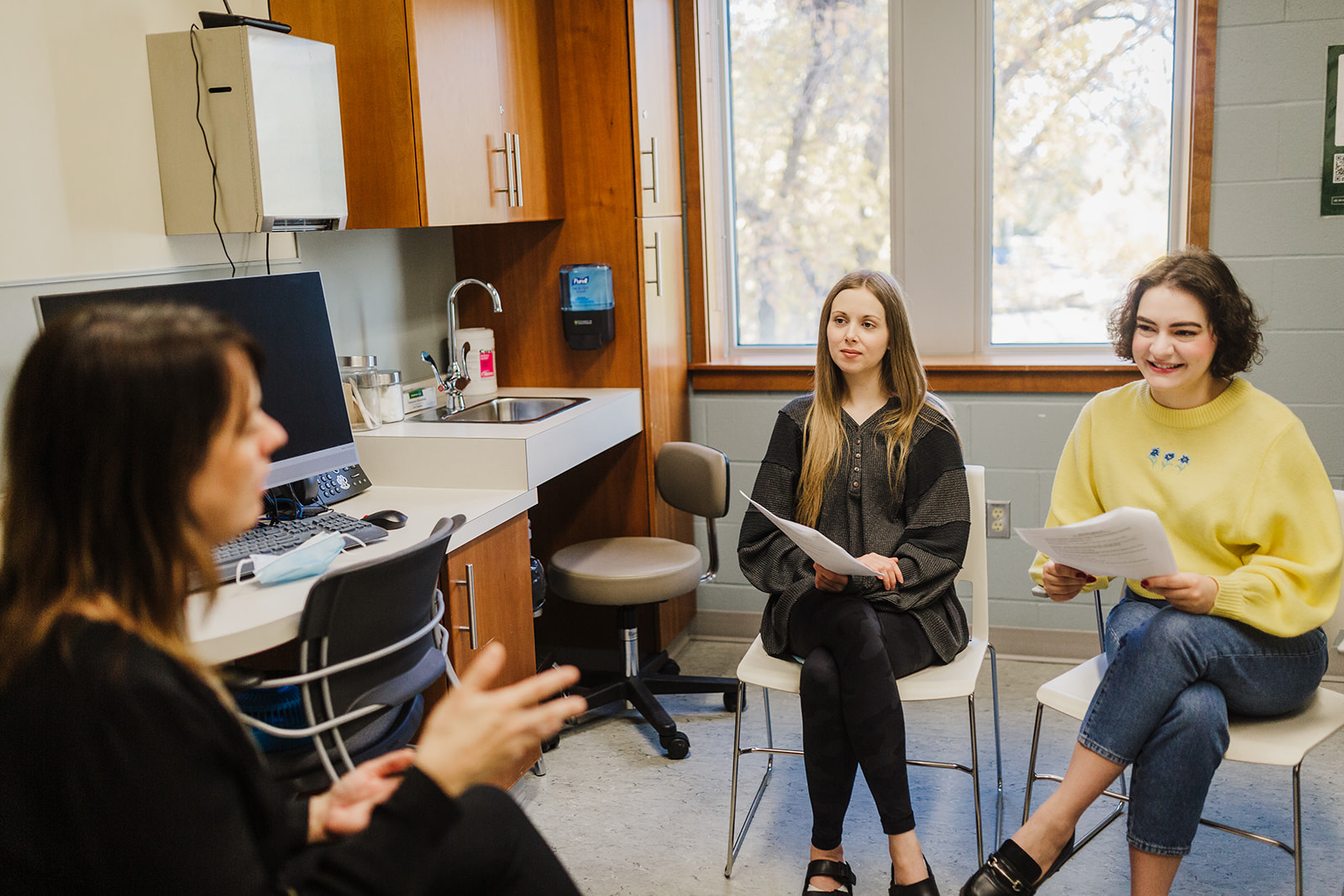
Healthcare Simulation Week: Meet a simulated patient
As a Simulated Patient (SP) at the University of Saskatchewan, Stephanie Cuzner helps to inform students' understanding of the patient experience and perspective.
Healthcare Simulation Week 2023 takes place between Sept. 18 and 22. To help recognize the importance of healthcare simulation and the work being done in that area at the University of Saskatchewan’s Clinical Learning Resource Centre (USask CLRC), we’re showcasing some of the people who help provide health science students and community partners with an innovative, educationally rich environment through simulation education, technology, research, and evaluation.
In this Q&A, we asked Stephanie Cuzner about her experience at the CLRC as a Simulated Patient (SP) and the importance of simulation for healthcare learners.
Since 1997, the University of Saskatchewan has recruited reliable, emotionally mature, and articulate Simulated Patients (SPs) committed to the clinical education and assessment of health science students, graduates, and residents.
Simulated patients portray patients in learning sessions, assessments, and examinations while under the supervision of a licensed instructor. These events vary in terms of the level of simulation required—ranging from SPs sharing simulated personal histories to memorizing the story of a complex character.
As part of the educational team, SPs support simulation-based education and experiential learning by taking training to standardize unique physical symptoms, personal histories, emotions, and patient concerns for portrayal to multiple students. Learning objectives may include communication skill development, demonstrating non-invasive physical procedures, or a combination of both.
In performing the simulation, the SP presents the complete picture of the patient being simulated—not just the history, but the body language, the physical findings, and the emotional and personality characteristics as well.
SPs help to inform students' understanding of the patient experience and perspective, providing an invaluable service to University of Saskatchewan healthcare education in Saskatoon and Regina.
What originally drew you to the SP Program?
- As a university student at the time of my entry into the program, I was originally drawn to the convenience of the work being right on campus. I was able to go to my classes, and then make the quick walk over for a session. The flexibility of the program was also the perfect fit for me at the time. It has always allowed you to work sessions around your schedule, whatever that looks like for you.
What are some of your favorite moments as an SP?
- My favourite moments usually revolve around conversations with other SPs, students and tutors. During sessions or exams there is often downtime to get to know the people you are working with that day, and I love being able to bond through the shared experience and build connections with them.
What are the most rewarding aspects of SP work?
- Being able to play such an important role in the education of learners as they become healthcare providers feels very rewarding. It’s satisfying to know that your contribution really matters and is making a difference in their lives and the lives of their future patients. The SP program always makes you feel very valued and respected, and this has been incredibly fulfilling as well.
Why is working with SPs important for healthcare learners?
- Getting regular opportunities to interact with and practice learned skills on real people is so important. Through the program, learners can develop skills like how to appropriately and sensitively communicate, how to understand patient body language and discomfort, and how to properly perform exams on all types of people and bodies. I think that gaining this experience can only add to their education and make them better practitioners one day.
Is there anything about being an SP that has surprised you?
- I was not expecting to learn as much as I have. Even after years of being an SP, I still learn something new in almost every session. I was also not expecting for my contribution to play such an invaluable role in learners’ education experience.
Do you have any advice for anyone considering supporting healthcare education through work as a Simulated Patient?
- If you’re looking to make an important contribution in the training of healthcare learners, interested in getting into the healthcare field one day, or just looking to learn a little bit more about healthcare so that you can advocate for yourself in your own life, try becoming a Simulated Patient. The knowledge you acquire can be lifechanging and the experience very rewarding.
How does the work you do as an SP make an impact outside of the University?
- You are constantly learning new things as an SP. It can be anywhere from medical terminology and lifesaving medical training, to what you want out of a healthcare provider, how to build rapport with someone, and how to approach sensitive conversations. This experience has directly translated into my life more times than I can count.
To learn more about the Clinical Learning Resource Centre at the University of Saskatchewan, visit https://healthsciences.usask.ca/CLRC.

